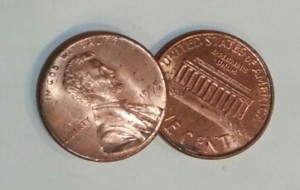Welcome to fifth and last of five in my series of: Finding a job in today’s Job Market – Write your own resume.
If you’d like to read the first in my series click here
If you’d like to read the second in my series click here
If you’d like to read my third in my series click here
If you’d like to read my fourth in my series click here
I will not go into detail how to write a resume because style is a preference. But I do have 2 different styles that I prefer and will discuss the differences between them: Functional Resumes and Chronological Resumes.
This article is not for you if you are a resume writer. It will piss you off because the goal of the article is to help everyone and anyone become proficient in resume writing to the point where they will never need to pay to have a resume done for them.
I remember when I lost my first job with a major bank. I obviously was strapped for cash since I was without a job. But I went to a resume writer to have my resume done professionally in the hopes that I could find a high paying job quickly. It cost me almost $100 bucks.
When I got my professionally done resume back, I was not anymore impressed then my original resume that I created myself. But still, it showed me that I was on the right track of resume writing. In this article I want to discuss how to create attention grabbing resumes. I will discuss the different kinds of resumes, formatting, and some do’s and don’ts.
From my opening statement it’s obvious that I don’t believe in hiring a resume writer. In my illustrious career, I had the opportunity to work for Lockheed Martin Corporation and we had to write our own reviews every year. These reviews are what would determine our pay raises.
My manager came over to me after reading the review that I wrote of myself, and with a big smile on his face and laughing he said to me that “there is no one that could represent me better than I represent myself”.
He was trying to tell me that I have the greatest reviews of myself and the biggest promoter of myself. I told him, “if I don’t believe in myself and promote myself, who else will”. I always got good raises. So the point I’m trying to make is that no one will write a better resume of yourself than you.
Here are tips to effective resume writing:
1) Do internet searches in Google for resumes in your field. You will find a slue of resumes of people posting their resumes online. Use these as templates. See how they word specific functions. See the functions they listed that you may have forgotten. See the buzz words they use that are relevant to what you do. This will show you what others are writing. Copy… don’t actually plagiarize, but learn from them, and be yourself.
2) Recognize the different kinds of resumes available. I found the 2 most popular to be functional resumes and chronological resumes. Some companies require functional resumes, while others like chronological resumes. And then there is the combination of both.
Functional Resumes: will list all of your skill sets right up front within the resume. It will not show where you got that skill, it will not show how long you’ve worked on that skill. It will simply list your skills and what you’ve done. Then following your skillset will be list of jobs that you had with the dates of employment etc. Following your jobs will be your education, references, etc.
Chronological Resumes: are written with your latest or current job shown up front first, showing start date and end date, listing all your jobs going back in time, where your first job will be listed last. With each job, you will list what you did on those jobs and your job function with day to day activity. The chronological resume will show what you did, where you did it and the year you’ve done it. Following the chronological listing of your jobs and the skills you did at each job will be the normal education, references, etc.
Here’s the difference between functional resumes and chronological resumes. So let’s just say you worked on Project X at your first company in 2010. If you hadn’t done Project X since then it will show that you hadn’t done project X since 2010 in your chronological resume. They will be able to determine that you had not done project X since 2010.
In the functional resume it just shows you know Project X but they have no way of knowing that you hadn’t done it since 2010.
Combination of Chronological Resume and Functional Resumes: Up front will be a short list of jobs skills that you are proficient in. Then the rest of the resume will follow the chronological format. This gives potential employees an eye catcher of your skills, and if they are impressed, they can then drill down into your resume to see when those skill sets were applied.
Additional tips:
There is no hard and fast rule, but the general consensus is to keep your resume to about two pages maybe, three pages maximum if you’ve been working many years in your field.
Additionally, I advise not to put your salary in your resume. When you fill out the Job Application, there will be spaces provided for entering job history with salary history.
The resumes are typically given out freely such as at job fairs or secretaries or to friends and associates. There is no need for these folks to know your salary history. While Job applications will only be seen by the hiring manager and Human Resources.
For references I typically state: Reference will be furnished upon request.
I list my normal formal education, and I make sure to list any certifications or additional classes I may have taken to enhance my skills.
==========================
Glad you landed on my blog. Feel free to comment
come back and visit for new content..

To your Success,


Greetings from a favorite
Vacation spot: Cefalu, Sicily, Italy
